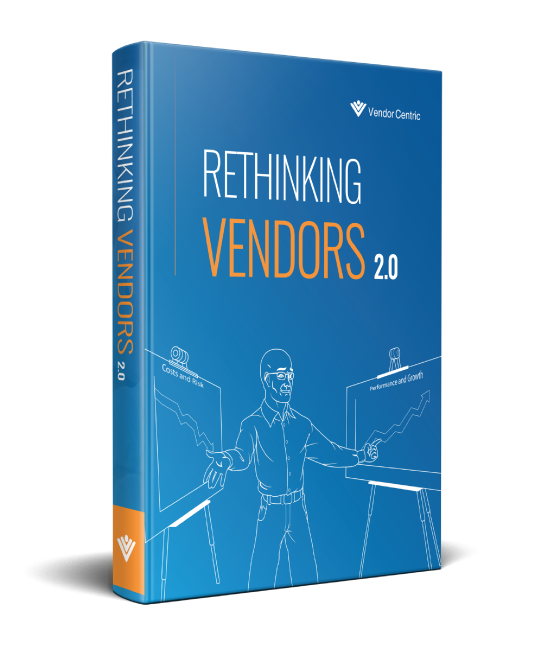Even the best designed vendor management programs can struggle if stakeholders aren’t engaged. Driving adoption requires many things — strong leadership support, clear processes, effective training, and more.
Yet one component that is often overlooked is communication — not just sending updates, but consistently engaging stakeholders in ways that build understanding, ownership, and momentum. Strong communications were one of the key strategies I highlighted in 7 Tips for Vendor Management Program Adoption.
In this blog, I’ll walk you through a practical approach to strengthening communications to improve adoption of your vendor management program.
In it I’ll cover:
Let’s dive in.
Why Stakeholder-Specific Communications Matter
To communicate in a way that drives change, you need to meet stakeholders where they are. One-size-fits-all communications often fall short because not all stakeholders are starting from the same place — their understanding of expectations or willingness to comply is different.
Communications need to address the specific barriers different types of stakeholders face when adapting to change. Examples include:
- Competing priorities: Some stakeholders are strapped for time and question why they should spend energy on what you’re asking them to do.
- Role confusion: Others are willing to follow policies and procedures but are unclear about their specific roles, responsibilities, and how they fit into the bigger picture.
- Integration challenges: Still others may understand the importance and what’s expected — but are struggling to figure out how to practically incorporate the new requirements into their busy day-to-day work.
When communications don’t account for these different realities, adoption can falter. By tailoring communications to these different personas, you create the clarity, relevance, and willingness needed to drive engagement and adoption.
When to Communicate: Different Stages Require Different Communications
Communication is not a one time effort – it should be continuous and fluid to be effective.
There are three key stages where communications play an essential role:
Early Stage (Planning for a Big Change)
This stage is when you are planning a major change initiative, which may involve updating policies and procedures, implementing new systems, introducing new forms and templates, and redefining roles and responsibilities.
At this point, communications need to prepare stakeholders for what’s coming and lay the groundwork for future adoption by focusing on:
- Why change is needed and the drivers behind the initiative.
- What types of changes are being planned — and the general impact to the different stakeholder groups.
- How stakeholders will be engaged, supported, and kept informed throughout the planning process.
Early-stage communications help minimize uncertainty, surface early concerns, and build an initial foundation of awareness and buy-in before any formal rollout begins.
Adoption Stage (Rollout and Implementation)
The adoption stage is when changes move from planning into action. New policies, procedures, systems, and expectations are formally introduced, and the focus shifts to getting stakeholders to adopt and operationalize them in their day-to-day work.
Communications during this phase should focus on:
- Reinforcing why these changes are important — both for the organization and for individual roles.
- Clearly articulating what stakeholders need to do differently and when.
- Providing clear guidance, training, tools, and resources to help stakeholders successfully transition.
Effective adoption communications drive early engagement, help stakeholders feel equipped to act, and build the momentum needed for full operationalization.
Continuous Improvement Stage (Sustainability and Value Creation)
Once the changes are live, the focus turns to sustaining adoption and continuously improving the program over time. Even successful initiatives require reinforcement — and as the organization evolves, so too must the program to stay relevant and effective.
Communications during the continuous improvement stage should focus on:
- Reinforcing key policies, processes, and expectations that need to stay top-of-mind.
- Celebrating wins and highlighting how the program is delivering value.
- Identifying and addressing emerging issues, gaps, or risks as they arise.
- Introducing refinements and enhancements to policies, procedures, or systems based on lessons learned and shifting needs.
Strong communications at this stage help ensure that adoption doesn’t just plateau — it matures alongside the organization, driving continuous improvement and ongoing relevance.
How to Tailor Communications to Different Stakeholders
Tailoring ensures that communications are relevant to each stakeholder group’s priorities, responsibilities, and challenges. A one-size-fits-all approach rarely works. Different groups care about different outcomes, have different roles to play, and face different practical barriers when it comes to adoption. Taking time to adjust your communications around these differences can dramatically increase engagement and help drive faster adoption.
Here’s a simple 4-step process to guide your approach:
Step 1. Identify Your Stakeholder Groups
Start by mapping out the key groups involved in or impacted by the program. Typical stakeholder groups may include executive leadership, business owners, procurement teams, operational users, compliance and risk teams, legal, and IT support teams. Understanding who you need to reach is the first step in crafting relevant communications.
Step 2. Understand Each Group’s Priorities, Roles, and Level of Effort
Once you’ve identified your key groups, take time to understand what’s important to them and what adoption will require. The more you can anticipate their priorities, responsibilities, and challenges, the better you can tailor communications to drive engagement.
For each group, consider:
- What outcomes matter most to them (e.g., speed, simplicity, compliance, risk mitigation, vendor performance)?
- What role do they play in adoption (e.g., execution, approval, reinforcement)?
- How much effort will be required for them to adopt new changes, and sustain them on a day-to-day basis going forward?
Recognizing these differences helps you anticipate stakeholder concerns and tailor communications to what matters most to each group.
Step 3. Craft Communications That Align to Their Priorities and Roles
Tailor your communications based on the specific needs and perspectives of each group:
- Executives: Focus on outcomes such as risk mitigation, regulatory compliance, cost containment, and reputational protection. Keep communications high-level, outcome-oriented, and efficient.
- Business Owners: Focus on how the changes will impact daily work, simplify tasks, and how support will be provided. Use clear, detailed guidance and practical examples to make adoption easier.
- Operations: For cross-functional departments like procurement, risk, compliance, legal and IT, emphasize how the changes improve controls, increase efficiency, or align with industry best practices. Provide targeted training and technical resources where necessary.
Aligning communications to stakeholder realities builds greater ownership and accountability for adoption.
Step 4. Choose the Right Channels and Formats
Finally, select methods that match your organization’s style of communication and provide the best outcomes. Executives may prefer brief updates, dashboards, or summaries delivered through leadership meetings, while business owners and operational departments may benefit more from detailed email updates, FAQs, quick-reference guides, or live training sessions.
Choosing the right format increases the likelihood that communications are not only received — but actually understood, remembered, and acted upon.
Final Thoughts
Driving adoption isn’t just about designing strong policies, procedures, or systems. It’s about ensuring stakeholders understand why changes are needed, what’s expected of them, and how they will be supported along the way. Clear, consistent, and stakeholder-focused communications are the bridge between a well-designed program and real-world results.
Tailoring communications requires extra effort — but it’s one of the smartest investments you can make to accelerate adoption and reduce resistance. The more relevant and actionable communications feel to each group, the easier it becomes to move stakeholders from awareness to action — and from action to sustained success.




















 Tom is a trusted advisor on procurement and third-party management to organizations across the United States. Having worked with over 120 organizations over his 30-year career, he has a unique ability to bring creativity and discipline to finding solutions for even the most complex challenges his clients face.
Tom is a trusted advisor on procurement and third-party management to organizations across the United States. Having worked with over 120 organizations over his 30-year career, he has a unique ability to bring creativity and discipline to finding solutions for even the most complex challenges his clients face.



